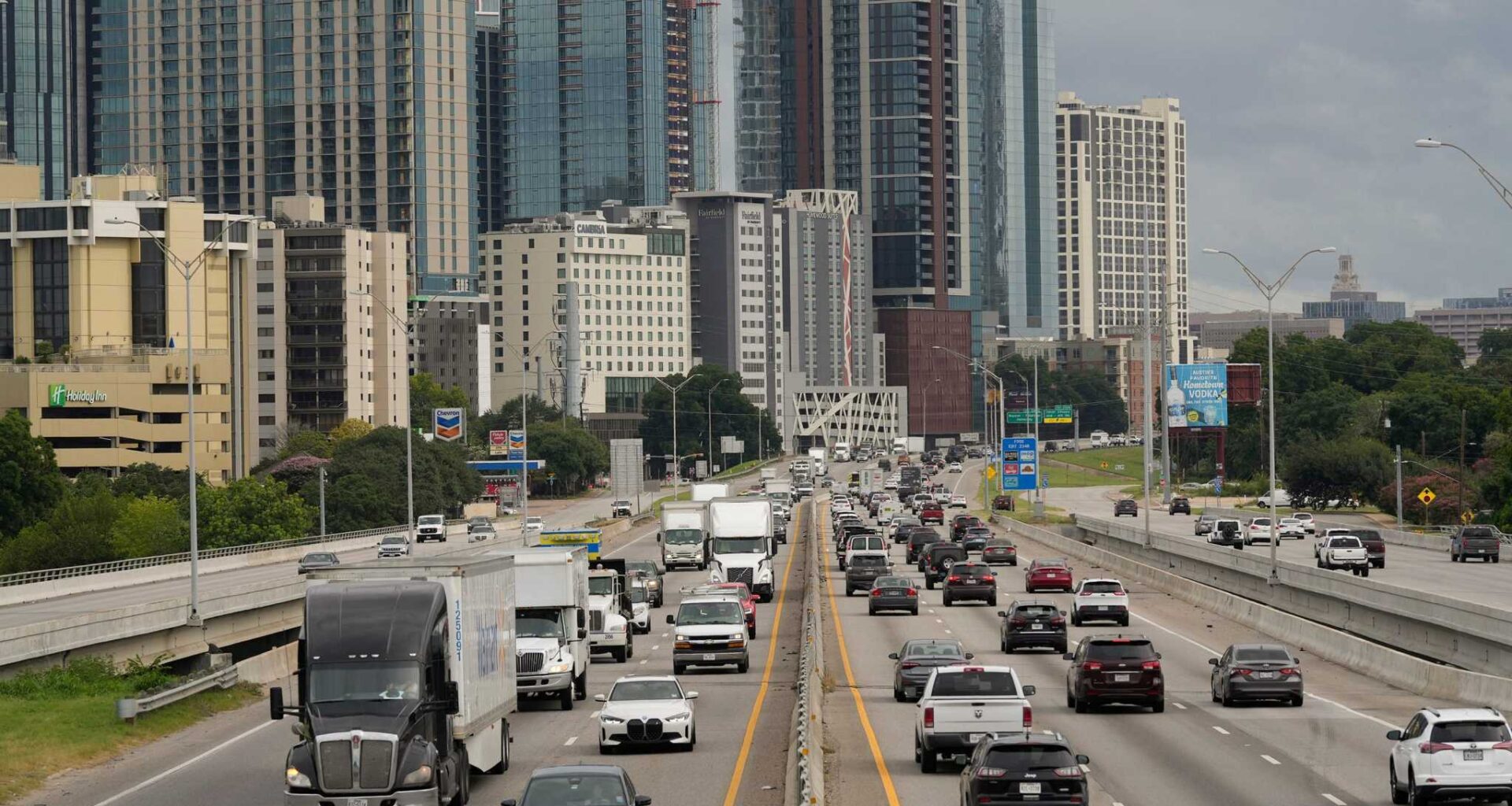Travis County J Andy Brown said, “If we have the will here in Texas to do it, we could finish (a high-speed rail line to Dallas) before the I-35 expansion from Austin to San Antonio is finished.”
Jay Janner, Jay Janner/American-Statesman
In a move aimed at breaking decades of inertia, the Travis County Commissioners Court unanimously approved a roughly $125,000 contract this week with engineering firm HNTB Corp. to study the feasibility of a new passenger rail line linking Austin and San Antonio. The county is paying the full cost of the six-month study, authorizing the work during Tuesday’s Commissioners Court meeting.
Judge Andy Brown said the focus is on carving a route through existing highway or interstate right-of-way — notably running beside State Highway 130 and later connecting to Interstate 10 — rather than trying to negotiate access on the freight-dominant line owned by Union Pacific Railroad, which has long blocked passage for more commuter rail.
Article continues below this ad
ROAD CONSTRUCTION TRACKER: Where major Austin-area projects stand
“This is looking at if we can squeeze a passenger rail route in the right of way that does not involve taking a lot of private land,” he said during the meeting. “I think that makes the possibility of getting rail between Austin or sort of Williamson-Travis [County] area, down to Bexar County, much more realistic and potentially much quicker.”
The study would serve as a companion to a separate Texas Department of Transportation initiative, also being executed by HNTB, which is analyzing passenger rail usage along the corridor between San Antonio and Austin. That study — focusing on ways to expand passenger rail operations along the Union Pacific corridor — is expected to wrap in March 2026.
By comparison, the Travis County study is expected to be completed in about 175 days, or roughly six months.
Article continues below this ad
RELATED: Austin CapMetro board approves 10-year transit plan
The alternate route would span about 90 miles — roughly 15 miles longer than I-35 — because it arcs east along SH 130 and I-10 instead of following the direct interstate corridor. The northern station will not be in downtown Austin, instead stopping at Austin‑Bergstrom International Airport, according to the draft contract.
Why Travis County is taking the lead now?
Travis County leaders argue the timing is critical: the I-35 corridor is already one of the most congested in Texas and is undergoing major reconstruction. Brown noted that if a rail alternative can be designed and built before major portions of the I-35 rebuild are done, it could relieve traffic earlier. Moreover, according to TxDOT’s statewide multimodal transit plan, daily vehicle miles travelled in Texas are projected to rise 42 % between 2020 and 2050, and per-person delays could triple unless new transit options are introduced.
Article continues below this ad
“Nobody likes being stuck on I-35, and it’s going to get worse,” Commissioner Brigid Shea said.
RELATED: A Texas bullet train? Why a high-speed rail proposal could face legislative roadblocks
The challenges of rail
While enthusiasm is high, county officials know the road to implementation is steep.
Article continues below this ad
A major obstacle to building passenger rail between Austin and San Antonio is finding space for the tracks themselves. The land alongside the corridor is already packed with homes, businesses and highways, leaving little open ground for a new rail line. In transportation terms, that space — the strip of land where tracks or roads are built — is called the right-of-way.
More than a decade ago, regional planners tried to solve the problem by proposing a new “freight bypass” east of Interstate 35. The idea was to build a separate line for Union Pacific’s freight trains so its existing tracks could be used for passenger service instead. That plan fell apart when Union Pacific withdrew, and the region has been without a viable path for passenger trains ever since.
Travis County’s new study tackles the same challenge from a different angle; seeing whether a new line could fit within existing highway rights-of-way along State Highway 130 and Interstate 10.
Another major question is who will ultimately operate and fund the service. Travis County is alone funding the feasibility study. Brown said if the outcome is positive, Travis County would then work with adjacent jurisdictions such as Bexar County and regional entities to develop a governance and funding plan, and seek federal funding for construction.
Article continues below this ad
Meet me in San Austin: It’s time to explore the idea of an Austin-San Antonio ‘mega-metro’
What’s next in Austin?
For now, the study is underway and Travis County will receive the results in mid-2026. Based on that, local officials will decide whether to launch detailed environmental study, identify a lead operator, negotiate with federal agencies, and choose a construction timeline.
Article continues below this ad
If momentum holds, Austin-Travis County would position itself to be among the first cities in Texas to leverage passenger rail in a major regional corridor.
“I’m very excited about this one,” Brown said.

